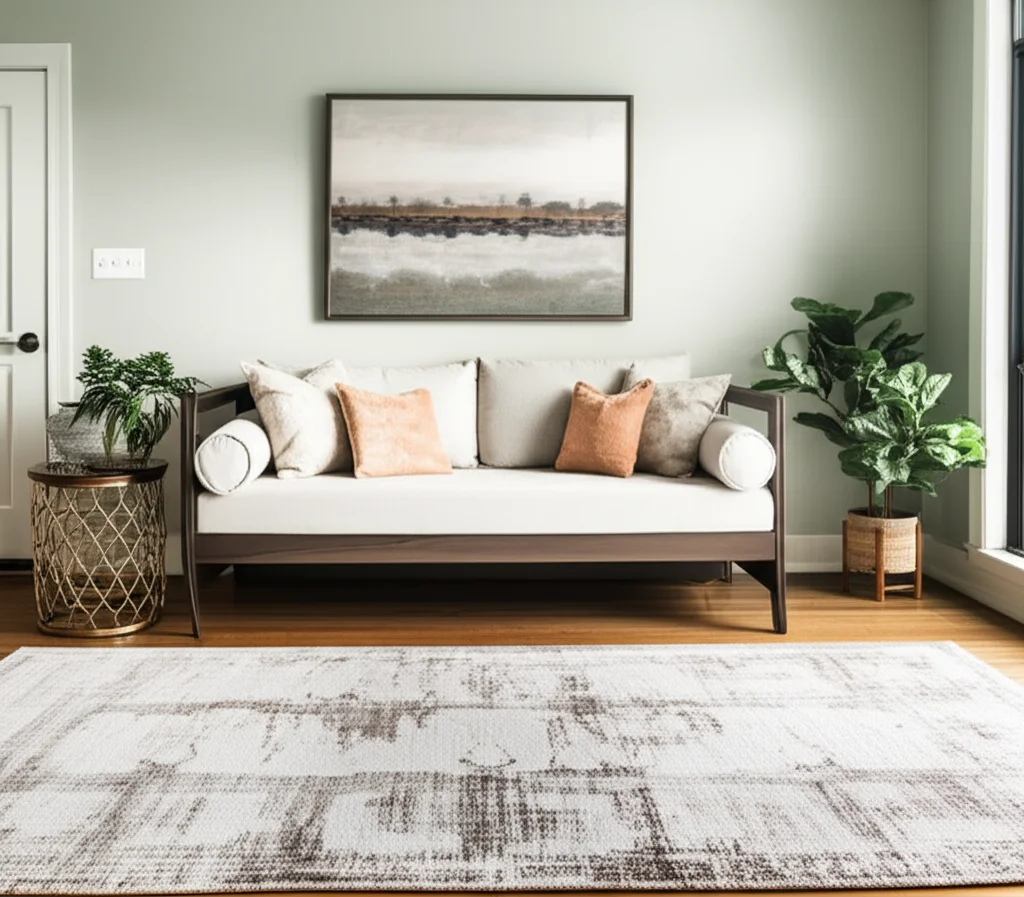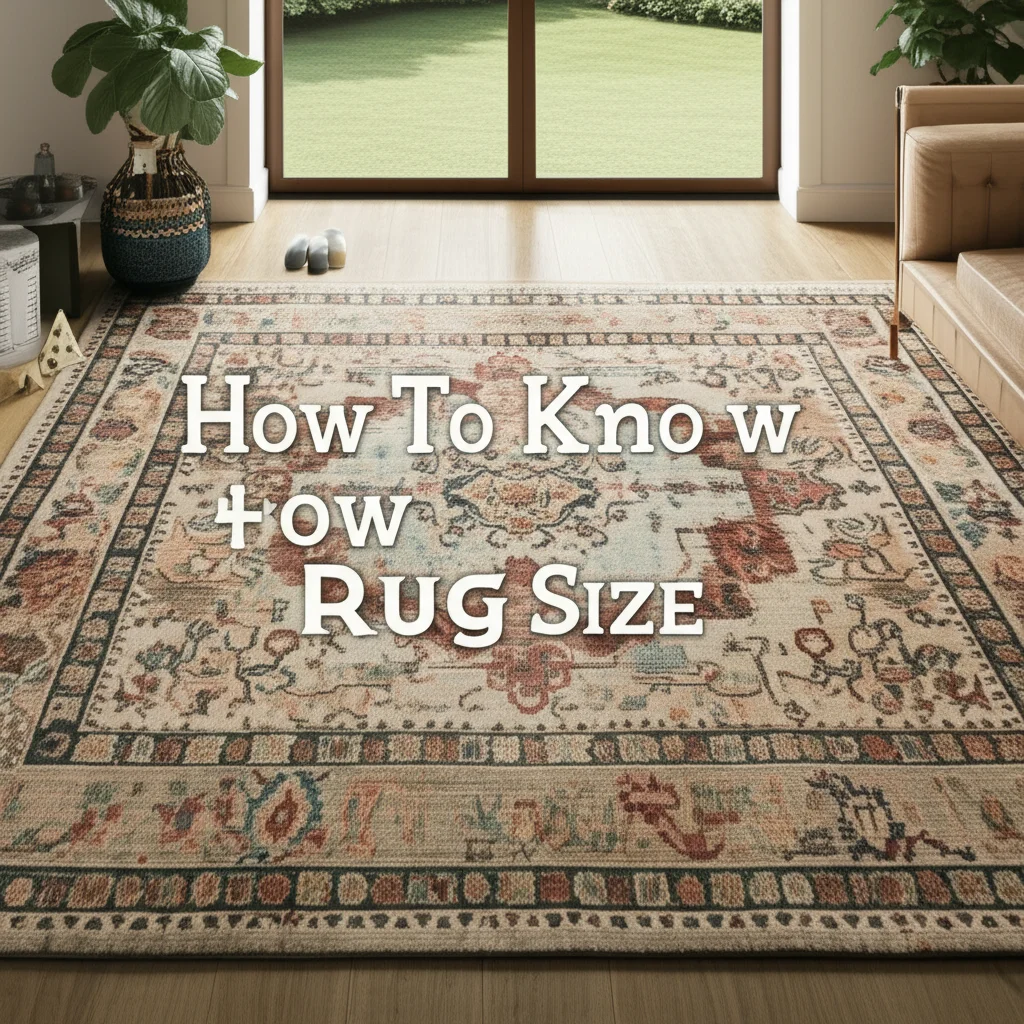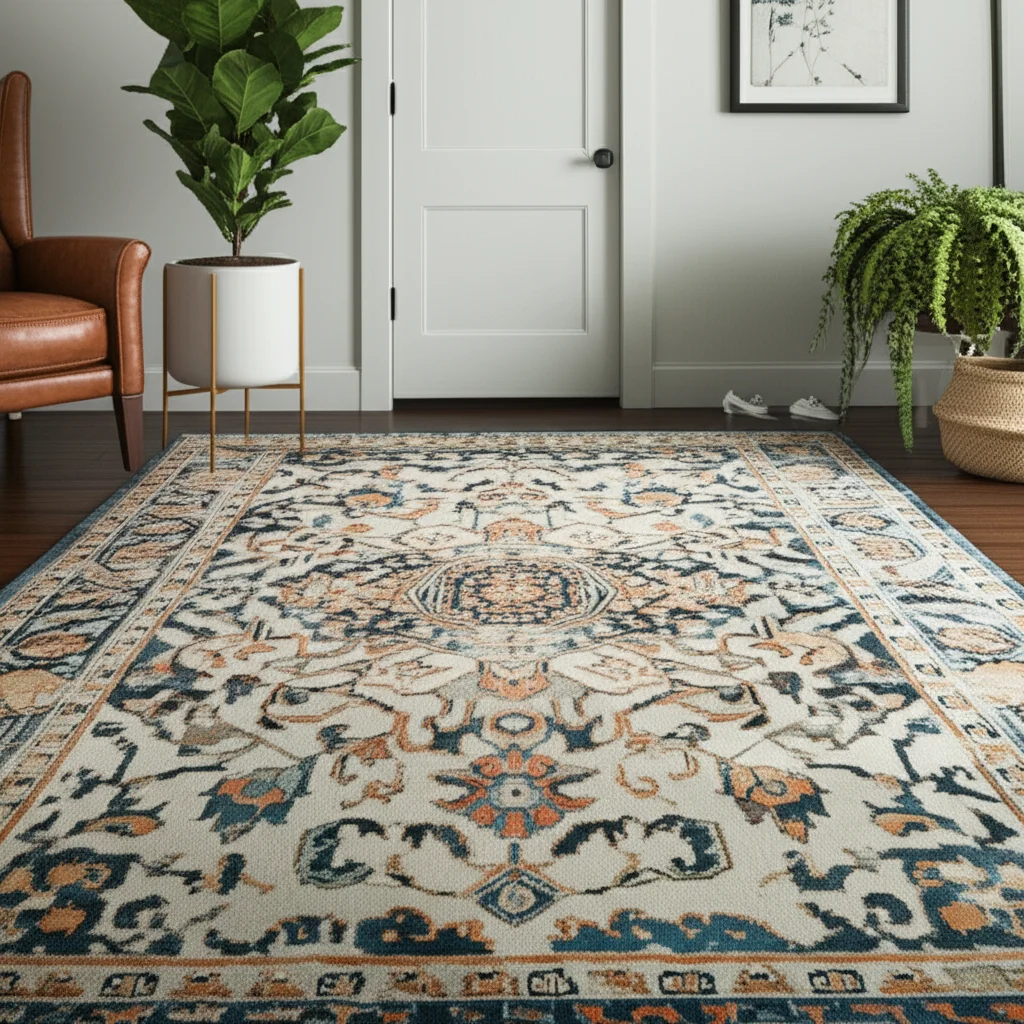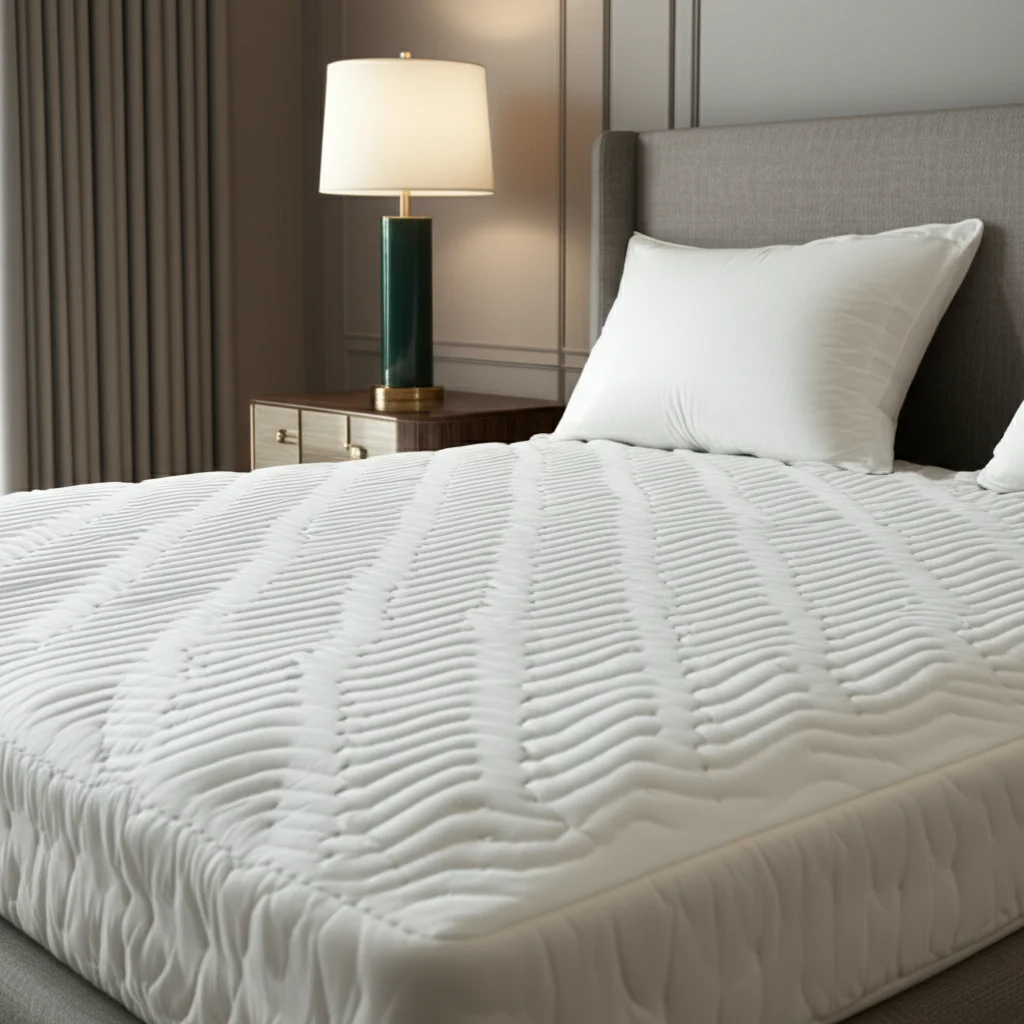· Todd Martin · Home Decor · 20 min read
How To Size A Coffee Table
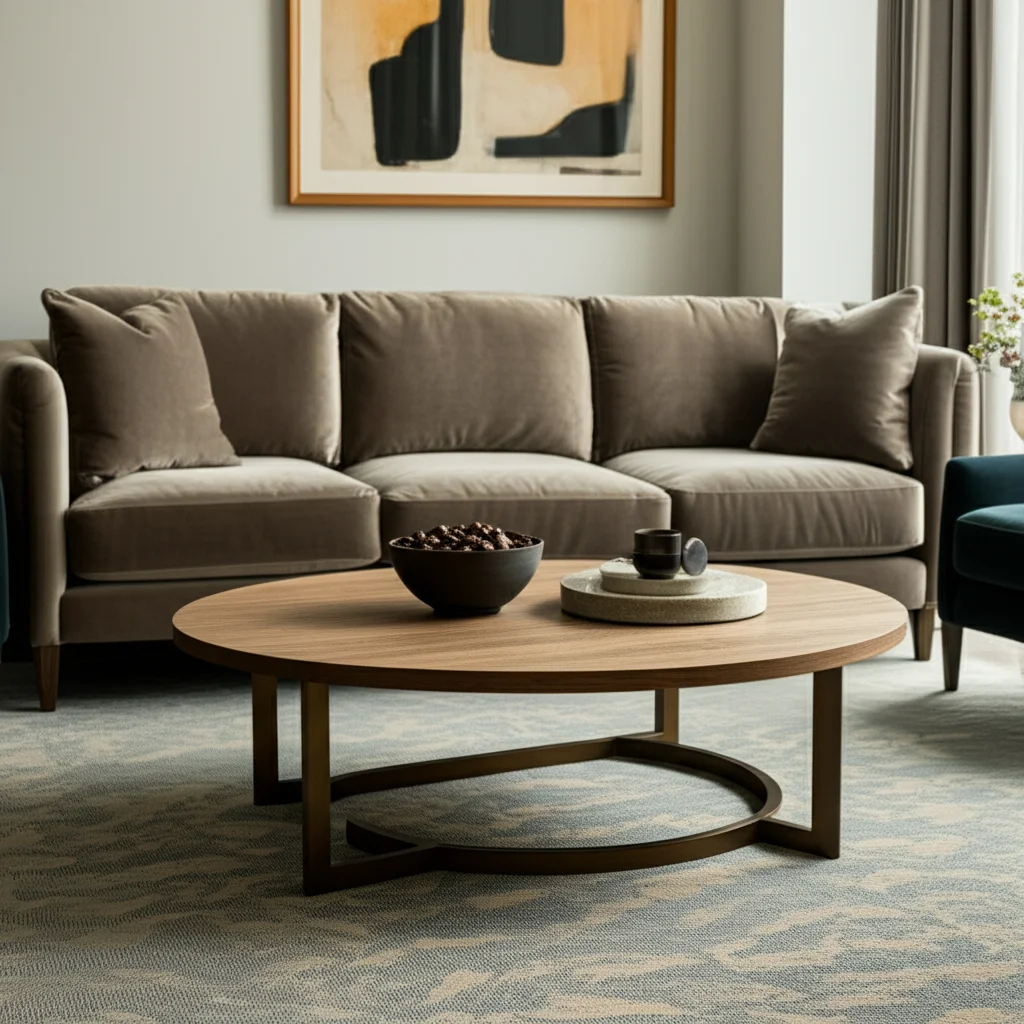
How To Size A Coffee Table Perfectly For Your Living Room
Have you ever wondered how to select the right coffee table for your living space? Choosing the correct coffee table size is more than just picking a design you like. The right size ensures comfort, function, and visual balance in your room. A well-sized coffee table ties your seating area together. It also provides practical surface space for drinks, books, or decorative items. This guide will walk you through the key factors. You will learn how to measure and choose the perfect coffee table for your home.
Takeaway
- Height is Key: Match coffee table height to your sofa’s seat cushions.
- Length Matters: Aim for two-thirds the length of your sofa.
- Consider Shape: Match the table’s shape to room layout and seating.
- Allow for Flow: Ensure enough space around the table for movement.
- Measure Your Space: Always measure your sofa and available floor area.
To properly size a coffee table, ensure its height is within 1-2 inches of your sofa’s seat height. Its length should be approximately two-thirds the length of your main sofa. Allow 18 inches of clearance between the table and seating. This balance provides comfort, accessibility, and good room flow.
Understanding Basic Coffee Table Sizing Principles
Picking a coffee table might seem simple at first glance. However, specific rules make a big difference in how your room feels. These guidelines help you select a table that fits both your space and your lifestyle. We want to ensure comfort and ease of use for everyone. Proper sizing avoids visual clutter and tripping hazards.
The main goal is creating a cohesive and inviting living area. A table that is too small gets lost in a large room. A table that is too big can overwhelm a small space. We consider how you move around the table. We also think about how you reach for items on it. These basic principles lay the groundwork for smart furniture choices.
The Golden Rules of Coffee Table Sizing
There are a few widely accepted rules that interior designers follow. These rules act as a starting point for most living room setups. They help create a balanced and functional space. Knowing these rules helps you make informed decisions.
- Height Rule: The top of your coffee table should be no more than 1 to 2 inches higher or lower than the seat cushions of your sofa. This height makes it easy to reach drinks and snacks. It also allows comfortable propping of feet.
- Length Rule: The coffee table should be approximately two-thirds the length of your sofa. This proportion ensures visual harmony. It also provides accessible surface area for most people seated on the sofa.
- Distance Rule: Leave about 18 inches between the edge of your coffee table and the edge of your sofa. This space allows for comfortable legroom. It also creates a clear path for walking. For smaller rooms, you might reduce this to 12-14 inches. Larger rooms can handle up to 24 inches.
- Traffic Flow: Always ensure at least 30 inches of clear space between the coffee table and any other furniture. This ensures smooth movement around the room. It also prevents the room from feeling cramped.
Following these rules helps you avoid common sizing mistakes. It also guides you toward a table that looks and feels right. Remember that these are guidelines, not strict laws. You can adjust them slightly based on your unique room and preferences.
Choosing the Right Coffee Table Height
The height of your coffee table is perhaps the most crucial dimension. It directly impacts comfort and usability. A table that is too low forces you to lean down uncomfortably. One that is too high can block your view or feel awkward. The ideal height creates a seamless connection with your seating.
The standard height for most sofas is around 18-20 inches from the floor to the top of the seat cushion. This means most coffee tables fall within this range. Tall sofas or sectionals may need a slightly higher table. Low-slung modern sofas will require a lower table. Always measure your sofa’s seat height before shopping.
Matching Table Height to Seating
Your coffee table should complement your sofa, not compete with it. A good height makes sure the table is always within easy reach. Imagine yourself sitting on your sofa. You want to be able to comfortably set down a drink without stretching too far. You also want to pick up a book with ease.
If your sofa seat height is 18 inches, a coffee table between 16 and 20 inches is usually ideal. This small variance allows for some personal preference. Some people like a table slightly lower for a lounge-like feel. Others prefer it slightly higher for better ergonomics when working or eating. Consider who will use the table most often. Think about how they will use it.
- For Lounging: A table 1-2 inches lower than the sofa seat can promote a relaxed, lounge-like atmosphere. It creates a subtle visual drop.
- For Convenience: A table at the same height as the sofa seat is very practical. It offers the most accessible surface for drinks and remote controls.
- For Multi-Use: If you plan to eat or work at your coffee table often, a table that is 1-2 inches higher might be more comfortable. This lifts the surface closer to your lap.
Remember, the goal is comfortable interaction. Don’t forget to measure the exact seat height of your specific sofa. Every sofa varies. This simple step prevents a common sizing error.
Determining Coffee Table Length and Width
After height, the length and width of your coffee table are the next critical measurements. These dimensions ensure the table fits proportionally with your sofa and the room. They also affect how much usable surface area you have. The wrong length can make your seating arrangement look unbalanced. The wrong width can impede movement.
The length of your coffee table directly relates to the length of your sofa. The general rule suggests a table that is two-thirds the length of your main sofa. This proportion creates a visually pleasing and functional arrangement. For example, if your sofa is 90 inches long, your coffee table should be around 60 inches long. This rule works for most standard sofa sizes.
Proportionality and Room Flow
When considering length, also think about how many people will use the table. A longer table serves more people seated along the sofa. A shorter table might be sufficient for a smaller sofa or if only one or two people use it. Always visualize the table in your space. Use painter’s tape on the floor to mark out the dimensions. This simple trick helps immensely. For ideas on arranging your main living room pieces, you might find tips on how to coordinate your coffee table and TV stand helpful.
The width of the coffee table is equally important. It determines how much space is left between the table and other seating or walls. The 18-inch clearance rule applies here. This distance allows easy access to the table. It also leaves enough space to walk around. A table that is too wide will make the room feel cramped. It can also make it hard to get in and out of your seating.
- For Rectangular Sofas: A rectangular or oval table often works best. Its length can easily follow the two-thirds rule.
- For Sectionals: A large square or round table can fill the “L” shape of a sectional. Ensure it is large enough to serve both sections of seating.
- For Small Spaces: Consider nesting tables or a smaller table if space is tight. You can also explore options like how to use an ottoman as a coffee table for flexible solutions. This can provide surface area when needed and extra seating or footrests otherwise.
Always consider the overall footprint the table will occupy. Make sure it does not block natural pathways in your room. Ensure guests can move freely.
Coffee Table Shape and Room Aesthetics
The shape of your coffee table plays a significant role in both aesthetics and function. Different shapes work better with different room layouts and seating arrangements. Choosing the right shape helps define your living area. It also impacts how easily people can move around the room. The shape also affects how easily you can style your table. For example, decorating a rectangular coffee table is different from decorating a round one.
Common shapes include rectangular, square, round, and oval. Each shape offers distinct advantages. Your choice should complement the existing furniture lines and overall room design. A round or oval table, for instance, can soften a room full of sharp angles. A rectangular table can complement a long sofa.
Matching Shape to Your Living Space
Consider your room’s layout and traffic patterns. Round and oval tables are great for rooms with high traffic. Their lack of sharp corners makes them safer for children and pets. They also allow people to move around them more easily. These shapes are also excellent for sectionals. They fill the empty space within the “L” shape. For more specific guidance on styling these shapes, explore articles like how to style a round coffee table or how to style a square coffee table.
Rectangular tables are the most common. They pair well with traditional sofas. Their length covers a good portion of the sofa. This makes items on the table accessible to more people. Square tables are often chosen for large sectionals or conversation areas. They offer a large, central surface. They work well when seating faces each other.
- Rectangular: Best with long sofas, narrow rooms. They define a clear walkway.
- Square: Ideal for large sectionals, conversation areas. They center the space.
- Round/Oval: Excellent for small spaces, high traffic areas, or softening angular furniture. They promote easy flow. They are also good for families with young children due to no sharp corners.
- Unique Shapes: Some tables come in irregular or abstract shapes. These can be focal points. Ensure they still meet height, length, and clearance requirements.
Think about how the table’s shape interacts with other furniture pieces. A rectangular coffee table might clash with a very round area rug. Balance lines and forms for a harmonious look.
Room Size and Layout: The Bigger Picture
Sizing a coffee table is not just about the sofa. It is also about the entire room. Your living room’s overall dimensions and layout are crucial. A large room can handle a larger, more imposing coffee table. A small room demands a more compact or visually light design. Ignoring room scale can lead to a cluttered or empty-looking space.
Consider the other furniture pieces in the room. Are there armchairs, side tables, or bookshelves? Each piece takes up space. The coffee table needs to fit within the existing furniture arrangement. It must not block pathways. It should also not overwhelm the room. Think about how the coffee table connects different seating elements.
Ensuring Proper Clearance and Flow
The 18-inch rule between the coffee table and sofa is a starting point. This distance allows easy access to the table. It also provides enough legroom. For other furniture, a minimum of 30 inches is recommended for main walkways. This ensures comfortable movement around the room. For instance, if you have a walkway behind your sofa, ensure enough space for people to pass comfortably.
- Small Rooms:
- Opt for smaller tables.
- Consider round or oval tables to minimize bumping.
- Choose tables with open bases or glass tops for a lighter feel. For example, knowing how to style a glass coffee table can make a room appear larger and more open.
- Nesting tables offer flexibility. You can pull them out when needed.
- Large Rooms:
- You can choose larger tables.
- Consider two smaller coffee tables side-by-side. This creates a large surface area without being a single bulky piece.
- A large square or rectangular table can anchor a spacious seating arrangement.
- Ensure the table still feels connected to the seating. Avoid placing it too far away.
Mapping out your room helps immensely. Use masking tape on the floor to outline potential coffee table sizes. Walk around these outlines. Pretend to sit on your sofa and reach for a drink. This physical simulation will reveal any clearance issues. It ensures your chosen table fits both physically and functionally. Remember that accurately measuring your space is key to making the best choice. For a detailed guide on measurements, look into how to measure for a coffee table.
Functionality and Usage Considerations
Beyond aesthetics, the primary purpose of a coffee table is functionality. How you plan to use your coffee table should greatly influence its size and features. Are you primarily using it for drinks and remote controls? Or do you need it for board games, meals, or extra storage? Different uses demand different table characteristics.
A family with young children might prioritize a sturdy, low table with rounded edges. Someone who frequently hosts might need a larger surface area. Someone living in a small apartment might need hidden storage. Thinking about these practical needs guides your sizing decision. It ensures the table serves its purpose well in your daily life.
Tailoring Your Coffee Table to Your Lifestyle
The ideal size often balances multiple functions. A coffee table can be much more than just a place for a cup of coffee. It can be a dining surface, a workspace, or a display area. Each function has specific requirements regarding size and features. For instance, if you want a table that can also store blankets or books, you might look into how to build a coffee table with storage.
- For Entertaining:
- Larger Surface Area: Choose a table that offers ample space for appetizers, drinks, and coasters. A longer rectangular table or a large square table works well.
- Accessibility: Ensure guests can easily reach items from different seating positions.
- Durability: Select materials that can withstand spills and heavy use.
- For Everyday Use (Drinks, Remotes):
- Standard Size: The two-thirds sofa length rule generally applies here.
- Easy Reach: Prioritize the 18-inch distance rule for comfortable access.
- Simple Design: A basic table without too many features may suffice.
- For Families with Children:
- Safety: Opt for round or oval tables to avoid sharp corners.
- Durable Materials: Choose materials that are easy to clean and resist scratches.
- Lower Height: A slightly lower table can be safer for toddlers learning to walk.
- For Storage Needs:
- Integrated Storage: Look for tables with drawers, shelves, or lift-tops. This is great for decluttering remotes, magazines, or blankets.
- Multi-functional: Consider an ottoman with a tray top that also offers storage.
- For Small Spaces/Multi-Purpose Rooms:
- Nesting Tables: These can be pulled out as needed for extra surface area.
- Lift-Top Tables: These tables can raise to dining or desk height, providing versatility.
- Ottomans as Coffee Tables: An upholstered ottoman with a tray can serve as a soft surface and occasional table. Learn more about how to use an ottoman as a coffee table for versatile solutions.
Think about what activities will most frequently occur around your coffee table. Let these activities guide your choice of size, shape, and features. A functional table enhances your living experience.
Considering Material and Visual Weight
The material and design of your coffee table greatly influence its “visual weight.” This is how heavy or light a piece of furniture appears in a room. A table’s visual weight impacts how a room feels. A heavy table can make a small room feel cramped. A light table can feel lost in a large space. This is an important, often overlooked aspect of sizing.
Materials like solid wood and dark metals tend to have a heavier visual weight. Glass, acrylic, or tables with open designs have a lighter visual weight. The legs and base design also contribute. A chunky, closed base looks heavier than slender, open legs. Your material choice should align with the desired feel of your room.
Balancing Style and Substance
When you choose a table, think about your room’s overall style. A rustic, solid wood table might fit a farmhouse-style living room. A sleek, glass-top table might suit a modern, minimalist space. The material impacts not only the look but also the table’s perceived size. A physically large glass table might appear smaller than a smaller, solid wood table.
- For a Lighter Feel (Small Rooms, Modern Decor):
- Glass Tops: Glass tabletops are visually transparent. They allow light to pass through. This makes the room feel more open and spacious. For maintenance, knowing how to clean a glass table top is helpful.
- Acrylic: Similar to glass, acrylic is clear and creates an airy feel.
- Open Bases: Tables with slim legs or open metal frames reduce bulk. They allow the floor to show through. This creates a sense of space.
- Light Colors: Tables in light wood tones or white also appear less imposing.
- For a Heavier, Anchored Feel (Large Rooms, Traditional Decor):
- Solid Wood: A robust wood table adds warmth and a grounded feel.
- Dark Metals: Black or dark bronze metal bases can add an industrial or traditional weight.
- Closed Bases: Tables with solid, non-transparent bases offer a more substantial look.
- Dark Colors: Rich, dark colors absorb light and make the table feel more prominent.
Consider the other materials in your room. If you have many heavy pieces, a lighter coffee table can provide balance. If your room feels too airy, a more substantial table can ground the space. The material impacts how the table looks and feels. It is as important as its physical dimensions.
Measuring and Planning Your Coffee Table Purchase
You have learned about height, length, shape, functionality, and visual weight. Now, it is time to put it all into practice. Accurate measurement and careful planning are key steps. They prevent costly mistakes and ensure your new coffee table fits perfectly. Do not rely on guesswork or approximations. Take precise measurements of your space and existing furniture.
A simple tape measure and some painter’s tape are your best tools. These allow you to visualize the table in your room before you buy it. This step is like a dress rehearsal for your furniture. It helps you see potential issues before they become real problems. For a detailed guide on how to take these measurements, consider reading how to measure for a coffee table.
Practical Steps for Sizing Success
Follow these steps to confidently size your coffee table:
Measure Your Sofa:
- Seat Height: Measure from the floor to the top of your sofa’s seat cushion. This is your primary guide for coffee table height.
- Length: Measure the total length of your sofa from arm to arm. Use this to determine the ideal coffee table length (approx. two-thirds of this measurement).
Measure Your Available Space:
- From Sofa to TV/Wall: Measure the distance from the front edge of your sofa to the wall or TV stand opposite it. Remember the 18-inch clearance rule. This will determine your maximum table width.
- Between Seating: If you have armchairs or loveseats facing or perpendicular to your sofa, measure the distance between them. This helps you select a table that provides comfortable access from all seats.
- Walkways: Identify all major traffic paths in your living room. Ensure at least 30 inches of clear space around the table for comfortable movement.
Use Painter’s Tape to Outline:
- Mark the ideal height on the wall next to your sofa.
- Use painter’s tape on the floor to outline the length and width of your potential coffee table.
- Sit on your sofa. Walk around the taped outline. Does it feel right? Can you easily reach the edges? Is there enough room to walk?
- Adjust the tape until you find dimensions that feel comfortable and look balanced.
Consider Other Elements:
- Area Rugs: If you have an area rug, the coffee table should sit entirely on it. If it cannot, at least the front two legs of the sofa and table should be on the rug.
- Focal Points: Does the table contribute to the room’s focal point, or does it distract?
- Existing Decor: Ensure the table’s material and style complement your current decor.
By meticulously following these steps, you will gain a clear understanding of the dimensions that work best for your unique living space. This planning ensures your coffee table is not just a piece of furniture, but a functional and beautiful centerpiece.
Common Sizing Mistakes to Avoid
Even with all the rules and guidelines, people still make mistakes when sizing coffee tables. Knowing these common pitfalls can help you avoid them. A well-chosen coffee table elevates your living room. A poorly sized one can make the space feel off-balance or impractical. These mistakes often stem from not fully considering all aspects of the room and its use.
One of the most frequent errors is choosing a table that is too small for the sofa. This often happens because people underestimate the visual presence a table needs. Another common mistake is neglecting the clearance around the table. This leads to cramped pathways and awkward movements.
Navigating Coffee Table Selection Pitfalls
Avoid these common blunders to ensure your coffee table choice is a success:
- Mistake 1: Too Small for the Sofa: A tiny coffee table next to a large sofa looks disproportionate. It can also be hard to reach from the ends of the sofa.
- Solution: Always follow the two-thirds rule for length relative to your sofa. If you have a very long sectional, consider two smaller coffee tables or a large square table.
- Mistake 2: Incorrect Height: A table that is too high or too low causes discomfort. It affects the ease of setting down items or propping feet.
- Solution: Measure your sofa’s seat height. Aim for a coffee table within 1-2 inches of this measurement.
- Mistake 3: Not Enough Clearance: Placing the table too close to the sofa or other furniture restricts movement. It makes the room feel tight.
- Solution: Maintain an 18-inch gap between the sofa and the table. Ensure at least 30 inches for main traffic paths. Walk around your taped-out dimensions to feel the space.
- Mistake 4: Ignoring Room Scale: A huge table in a small room overwhelms it. A tiny table in a large room gets lost.
- Solution: Match the table’s overall size and visual weight to the room’s dimensions. Consider open designs or glass for smaller rooms.
- Mistake 5: Overlooking Functionality: Choosing a table purely for looks without considering how you will use it.
- Solution: Define your primary uses (eating, playing games, storage). Select a table that supports these activities. If you need storage, explore options like a table with drawers.
- Mistake 6: Forgetting About Other Furniture: The coffee table is part of a larger arrangement. It needs to work with side tables, accent chairs, and media consoles.
- Solution: Consider the overall furniture layout. Ensure the coffee table complements, rather than clashes with, other pieces. Think about how to coordinate your coffee table and TV stand for a cohesive look.
- Mistake 7: Impulse Buying: Picking the first table you like without measuring.
- Solution: Always measure your space and sofa first. Use painter’s tape to visualize the size. This prevents returns and disappointment.
By being aware of these common errors, you can approach your coffee table selection with greater confidence. This helps you find a piece that truly fits your home.
Conclusion: Finding Your Ideal Coffee Table Size
Choosing the perfect coffee table size is a critical step in creating a functional and beautiful living room. We have explored the essential rules for height, length, and width. We also discussed how shape, room dimensions, and your specific needs impact your decision. Remember, a well-sized coffee table ties your seating together. It provides practical surface area and ensures comfortable movement.
My advice remains consistent: measure first, visualize with tape, and always prioritize functionality alongside aesthetics. Do not rush the process. Consider how you live in your space. Think about what activities occur around the coffee table. This thoughtful approach leads to a successful purchase. You will find a coffee table that feels like it was made for your home. Now you have the tools to confidently size a coffee table that enhances your living experience. Start measuring today and transform your living space.
- coffee table size
- living room furniture
- furniture dimensions
- coffee table height
- space planning
- interior design tips


